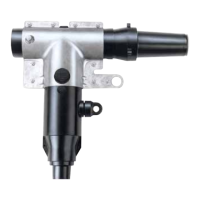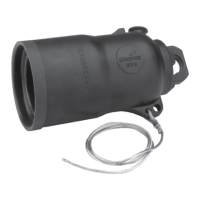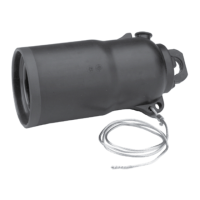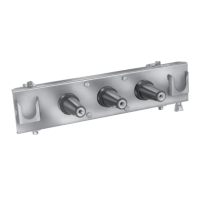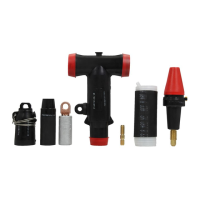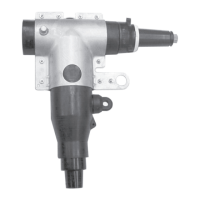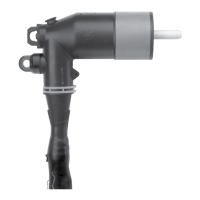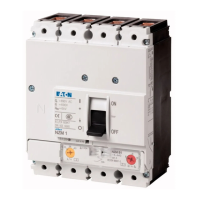Time-integrating mode
When the load voltage goes out-of-band, the time-delay
circuit is activated. At the end of the time-out, a tap change
is initiated. After each tap change, a 2-second pause occurs
to permit the control to sample the voltage again. If the
voltage is still out-of-band, another tap change is performed.
This sequence continues until the voltage is brought
into band. When the voltage goes in-band, the timer is
decremented at the rate of 1.1 seconds for every second
elapsed, until it reaches zero.
Voltage-averaging mode
When the load voltage goes out-of-band, the time-delay
circuit is activated. During this time-delay period, the
microprocessor monitors and averages the instantaneous
load voltage. It then computes the number of tap changes
required to bring the average voltage back to the set
voltage level. When the time-delay period is complete,
the computed number of tap changes are performed
without any delay between them, up to a maximum of five
consecutive tap changes, to avoid an accumulative error. The
timer is not reset on voltage excursions in-band unless the
voltage stays in-band for at least ten continuous seconds.
An error-averaging characteristic is inherent with the voltage-
averaging mode.
Note: To permit sufficient time for the microprocessor to
average the voltage, the time-delay period must be 30
seconds or longer. If the time delay is set for less than
30 seconds, the control ignores the setting and uses
30 seconds.
System line voltage
The control performs ratio correction in the firmware, and,
consequently, the primary voltage must be entered for the
control to perform this calculation. This value is simply the
nominal single-phase voltage supplied across the L and
SL terminals. Regulators shipped from the factory are set
for the voltage indicated by the pin on the nameplate, and
this value is programmed into the control. If the regulator is
installed on any other system voltage, this system voltage
must be entered for proper operation.
Potential transformer ratio
Since the control performs ratio correction in the firmware,
the PT ratio for the voltage-sensing supply must be entered
for the control to perform this calculation. The ratio to be
programmed in the control is the OVERALL PT RATIO, as
shown on the regulator nameplate for every applicable
system voltage for the particular regulator. The PT ratio,
which corresponds to the regulator’s rated voltage, is set by
the factory. If the regulator is installed on any other system
voltage, the corresponding PT ratio must also be entered
for proper operation. This value includes the correction
performed by the ratio-correcting transformer (RCT) on the
back panel of the control enclosure. The voltage from the
RCT is normally corrected to 120 V. However, when this
voltage is other than 120 V, the control will calibrate the
input voltage to a 120 V base and 120 V will be displayed at
FC 6. The voltage test terminals will continue to show the
voltage as applied to the control from the RCT.
Current transformer primary rating
The control is designed for 200 mA (full scale) as the rated
CT current and will meter to 400 mA (200% load) with
no loss of accuracy. Ratio correction is performed by the
firmware, and, consequently, the CT primary rating must be
entered. The CT primary rating is available on the regulator
nameplate.
EXAMPLE: If a CT ratio 400/0.2 is indicated on the nameplate,
then 400 must be entered at FC 45.
Delta-connected (line-to-line connected) regulators
When a regulator is connected line-to-line, the phase angle
of the line current is 30 degrees displaced from the voltage
impressed across the regulator. Setting the Regulator
Configuration, FC 41, correctly, the correct relationship
between the voltage and current is established. Setting the
regulator Configuration to the incorrect delta value (lagging
instead of leading, or vice versa), the phase angle will be in
error 60 degrees. Below are considerations concerning delta-
connected regulators:
•
The basic decision-making of the control when line-drop
compensation is not used is not affected by the phase
angle; therefore, operation will be correct even if FC 41
is set to either of the two incorrect values. This is true for
forward and reverse operation.
•
If line-drop compensation is used, the scaling of the R
and X values is controlled by FC 41; therefore, it is impor-
tant to correctly set FC 41 for the compensated voltage
to be set correctly.
•
The following metering parameters will be correct only if
the Regulator Configuration is correctly set: power factor,
kVA, kW, kvar, demand kVA, demand kW, and demand
kvar.
ote:N The kVA, kW, kvar, demand kVA, demand kW, and
demand kvar use the line-to-line voltage; therefore,
they display the value at the regulator not on any one
feeder. To determine the total three-phase value of
any one of these parameters, each regulator value
must be divided by √3 (1.732) before adding the three
together.
27
CL-6 SERIES CONTROL INSTALLATION, OPERATION, AND MAINTENANCE INSTRUCTIONS MN225016EN January 2016

